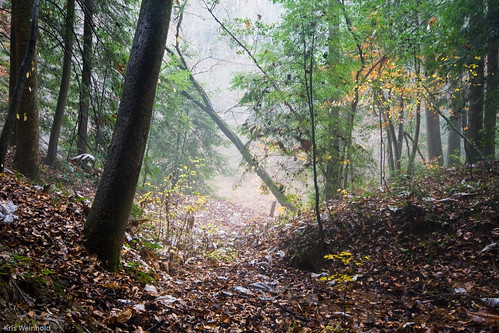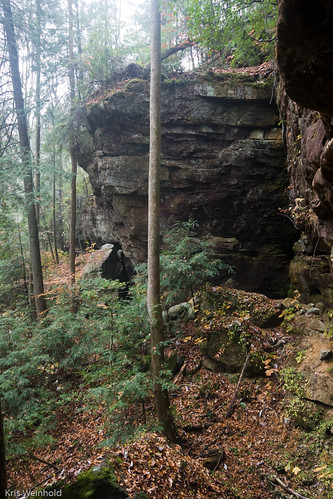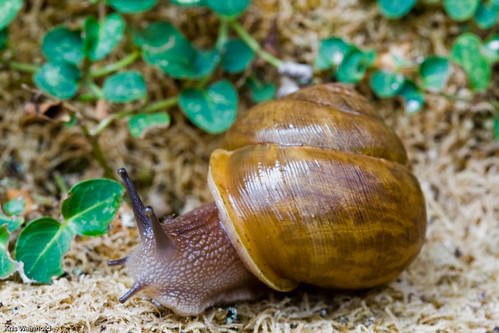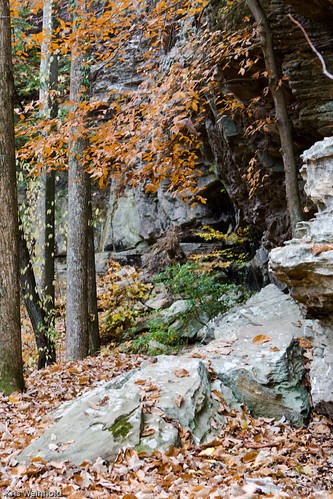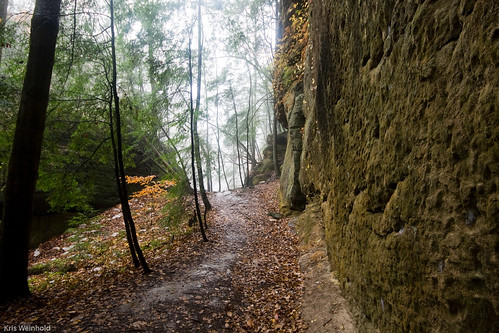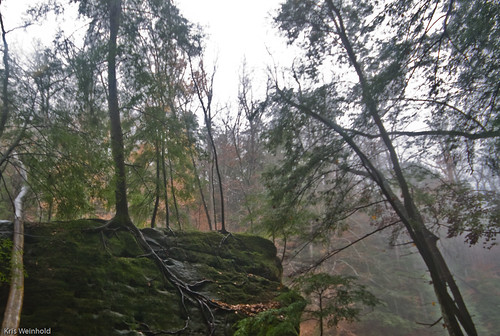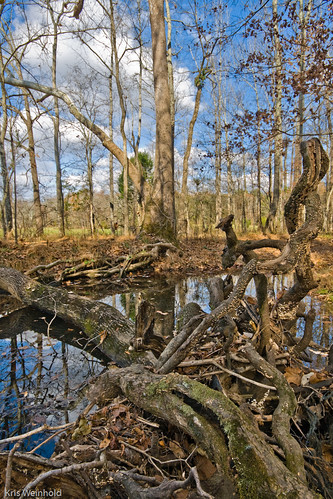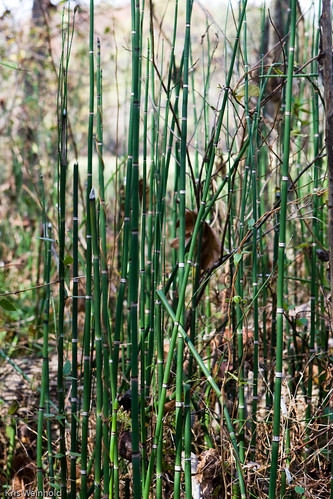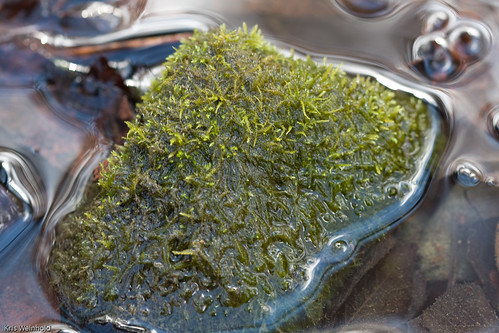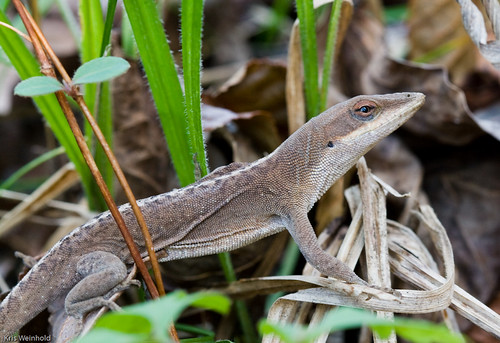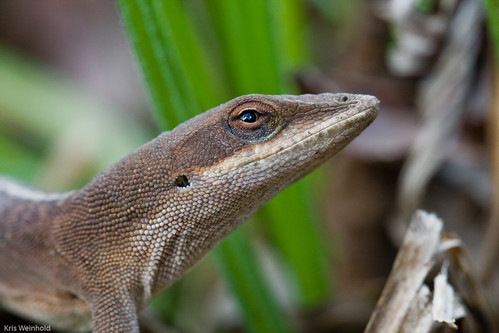Alabama Rocks & Forest
November 26th, 2007Last week, one of my cousins was kind enough to take me hiking through the woods around Borden Creek in Bankhead National Forest. Despite torrential downpours while we were hiking (thankfully no lightning) we had a heck of a good time exploring around.
The obvious feature of the landscape that’s impossible to miss are huge rock outcroppings lining both sides of the creek. Due to the heavy rain, we tried to stay close to these rocks to gain some refuge from the weather.
There are some massive boulders throughout the forest, dwarfing many trees, and creating large tunnels between them. The shade of these rocks appears to prevent most undergrowth, besides some mosses and ferns, from really taking over the forest floor.
Below is one of the more extended pathways between rocks. This pathway arches around to the left, and goes for another 50-75 feet. I imagine that these large pieces of rock broke off of one another, and shifted apart over time.

As I mentioned, many mosses line the rocks and tress along Borden Creek. They really add a nice character to the rocks, and with the freshly fallen autumn leaves lining the ground, there were some really beautiful landscapes.
We weren’t just enjoying the landscape; we found a few other creatures out in the rain that day. A box turtle was slowly creeping along the rocks, but refused to pose for a picture despite several attempts waiting for him to come out of his shell. We saw plenty of these silver-dollar-sized snails grazing on the moss of the rocks.
Did I mention that there were some pretty scenes in the forest?
Did I also not mention how huge these rocks were? This rock wall below extended at least 4-5 stories tall. The rock itself is full of many indentations and crevices that I presume are weather worn, even though they look slightly volcanic in some areas.
I was amazed how many plants managed to find life by burrowing deep into the rock and it’s cracks. This tree below somehow managed to root itself in the rock, along with plenty of ferns, holly, moss, and countless other plants.
Next time I’m down in the area, I intend to find a dryer day to explore this area more significantly. Supposedly, there is a waterfall along this creek, however, I doubt that it would have been anything fantastic on this trip, as drought left the creek many feet below normal levels. As an example, my cousin claims to have kayaked down this waterway, but when we were there, it was barely 6 inches in some places.
